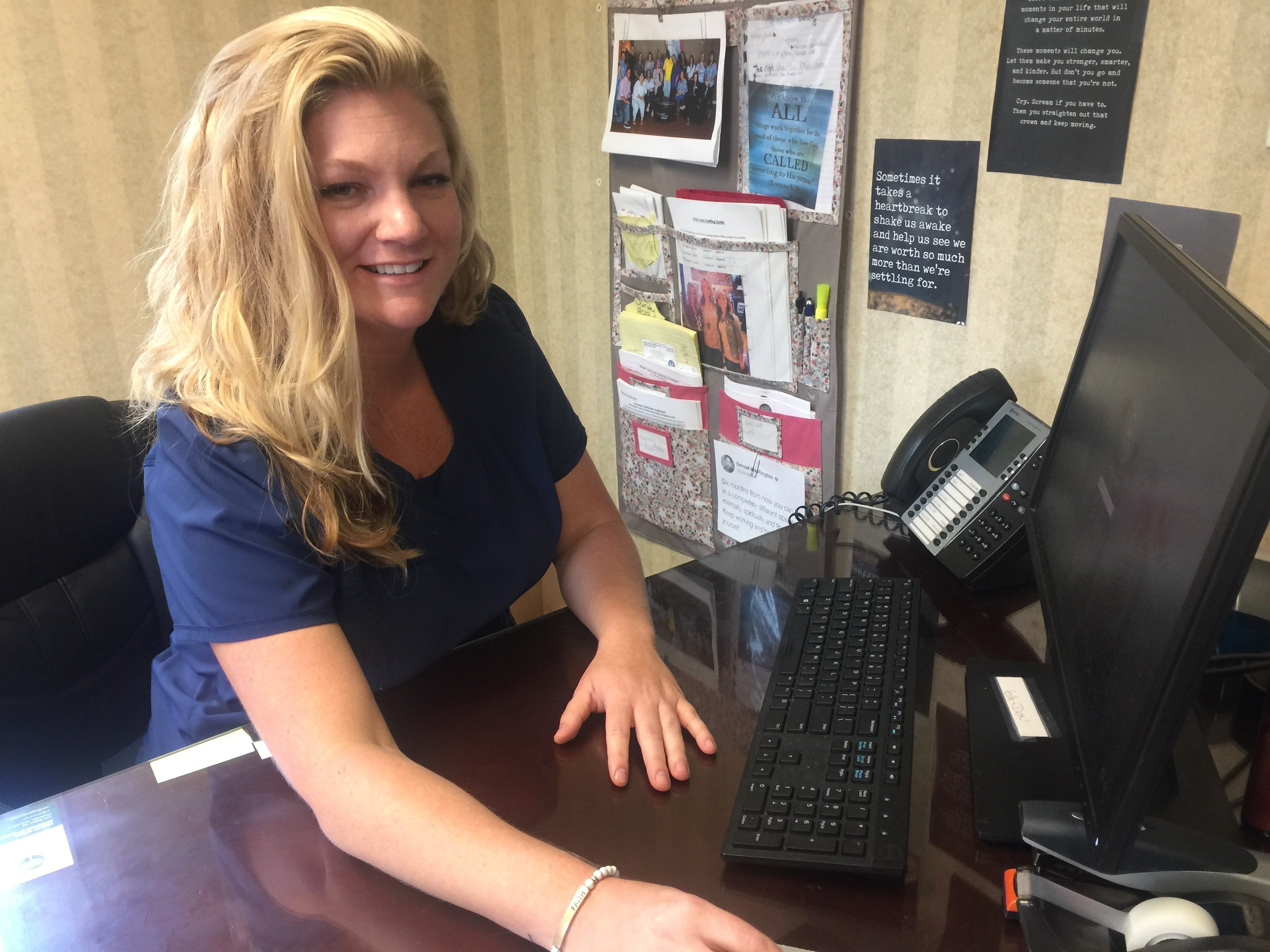
Nursing home one of first to contribute patient health information in Ohio
December 11, 2020
Community Paramedics: Bridging the Healthcare Gap
December 11, 2020Mount Logan Clinic open house to be held September 12
by Dorothea Howe
You come home from work, make dinner, bathe and get the kids ready for bed, when you feel your two-year-old’s forehead burning up. It’s 9 p.m. and his temperature is 103 degrees. What do you do? Where do you go?
For most people in Chillicothe, the Emergency Room at Adena Health System on the north side of the city is the only place to go for medical care at night. If you live on the east side, you must drive for 15 minutes or get a ride to go across to the other side of town.
Mount Logan Clinic Provides Access to Care
A new clinic will lessen this problem, providing less expensive, easier access to care. The Mount Logan Clinic will have evening hours so people can avoid the Emergency Department and get the care they need from 1:30 p.m. until 10:00 p.m. Monday through Friday.
Located in a vacant elementary school building at 841 E. Main Street, the clinic also will provide Adena Advocacy Services from 8 a.m. to 4 p.m. Monday through Friday for those who experience any kind of domestic or interpersonal violence. An open house will be held September 12 from 5-7 p.m. so the public can tour the facility.
A partnership among the Adena Health Care System, Hopewell Health Centers, Ross County Health District, Chillicothe City School District and many other entities in a coalition known as Partners for a Healthier Ross County have been working on a plan to provide better access to health care for all citizens, especially the elderly, low-income, minorities and people with disabilities. The school district has recently built an elementary school so the older building will be used as a multi-use community center including the clinic, public library branch, preschool and other community services.
“This clinic is for people of all ages – from newborns to geriatrics,” says Mark Bridenbaugh, Chief Executive Officer at Hopewell Health Centers, a federally qualified health center on Western Avenue with experience in managing clinics.
The clinic is 2,500 square feet with five exam rooms, a nurse’s station, three offices for the Adena Advocacy Program, a waiting room, registration area, and a manager/provider office with a nurse practitioner.
The clinic will handle routine illnesses and well care that usually occur at a primary care doctor’s practice. Acute care includes problems like colds, sore throats, ear infections, strep exams, asthma attacks and other ailments where the patient doesn’t need emergency services.
In addition, well care also will be provided, such as immunizations, vaccinations, diabetes testing, blood pressure readings, cholesterol checks, physicals and any monitoring of chronic conditions. Primary care providers – such as family doctors and nurse practitioners – usually function as the main provider who can coordinate care for a patient.
“Partners for a Healthier Ross County is trying to make Ross County healthier. Value-based health care means providing care that is in the right place at the right time – not in the Emergency Department where it’s most expensive — and you’re producing better outcomes, so you keep those people out of the hospital,” Bridenbaugh says.
“We’re seeking the triple aim: Better outcomes, patient satisfaction, and reduced cost for everyone,” he says.
Using Data to Set Priorities
Ohio is 47th out of 50 states in the status of public health (Health Policy Institute of Ohio Dashboard), and Ross County reflects this dismal picture. This is exemplified in data from various entities that show Chillicothe’s health and transportation needs, and Adena’s ability to track Emergency Room use impacting its participation in Medicaid and Medicare programs at the state and federal levels that can measure and manage high-risk populations.
The Ohio Department of Health and a team from the Ohio Health Information Partnership, which manages the CliniSync Health Information Exchange, worked together with the other partners to analyze data on hypertension, prediabetes and diabetes. Ross County Health District provided insight into public and population health analyses, which identify problems and provide programs and solutions.
“We first looked at the use of the emergency room, especially the high number of visits (at least three in a year); and tried to find out why this was happening, what could be done, how to increase access, what types of illnesses,” says Cathy Costello, Director of CliniSyncPLUS.
CliniSync is Ohio’s Health Information Exchange that connects 155 hospitals with thousands of physicians throughout the state. Costello manages the arm of the organization that assists hospitals and practices with reporting and population health. Results showed that 47 percent of patients visited the Emergency Department between 2 p.m. and 10 p.m. For children, 60 percent needed pediatric care between 2 and 10 p.m. while 40 percent needed care in the evening.
s the graphic on health conditions shows, the top health issues and causes of death in Ross County result from chronic conditions that must be monitored and managed.
“This is an opportunity for the community to get on the same page in terms of using data to identify priority health topics, and then to work collaboratively to change those outcomes. It also allows us to align with the state’s priorities as well,” Avery says.
The Ross County Health District is contributing to the group’s strategies by addressing community conditions, such as transportation and patient advocacy through community navigators and health workers.
Transportation Problems To Be Tackled
Imagine how convenient it would be for someone to pick up your elderly grandmother to take her to the clinic where she is treated by a doctor and staff that knows she has heart failure and diabetes. This “on demand” transportation is just one of the options the partners are exploring.
The Ross County Health District received an award of $55,594 from the Oho Department of Transportation, which will be matched locally with $13,898 for a grand total of $69,492. The Ross County Board of Developmental Disabilities and Chillicothe Transit will help meet the match requirement.
The money will be used for a mobility manager who can advocate for all kinds of transportation – everything from the Chillicothe Transit bus system to nonemergency medical providers to on demand transportation to help the elderly, developmentally disabled and moderate income individuals get access to transportation, says Ben Avery, administrator at the Ross County Health District.
Together with other partners, the mobility manager will identify transportation needs in the community and develop strategies to address them. Surveys on medical needs, social needs and transportation are out in the community and will help identify critical areas. A new plan will pinpoint areas for improvement and innovation. This concept has succeeded in Athens County, Avery says.
Community Health Workers Will Increase Outreach
Access to care is difficult because Ross County is the second largest county in Ohio behind Ashtabula, spanning 688.5 square miles with a population of 78,064 citizens. Of those, 23,894 are on Medicaid, which is the state program for low-income populations. Without access to transportation and medical care, these individuals either can’t address their medical needs or overuse the Emergency Room Department for care.
“One of our goals is to make health care geographically accessible, and the other is to increase our community’s confidence in the full healthcare system. That’s why our Community Health Workers will be critical as advocates and navigators to provide the support that patients need,” Avery says.
Along with providing assistance to patients with illnesses and chronic conditions, the Community Health Workers will become part of an educational campaign that will focus on the importance of each patient having a primary care doctor so their care can be properly coordinated from a main source.
“When patients can view physicians, clinicians and Community Health Workers as part of their ‘medical home,’ it will hopefully promote cultural confidence in the healthcare system and reduce the misuse of the Emergency Room for routine illnesses,” Avery says.




